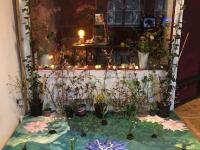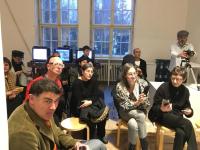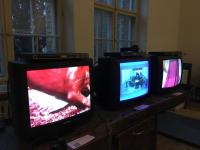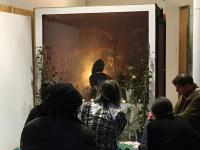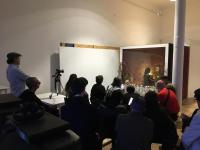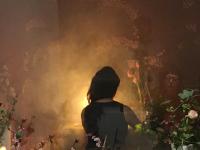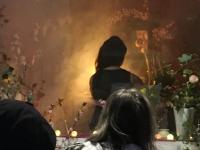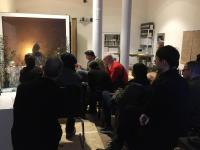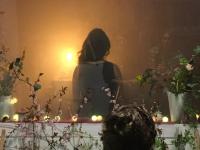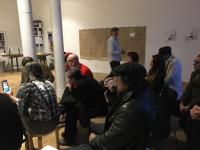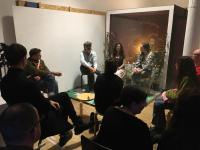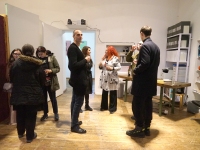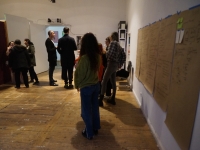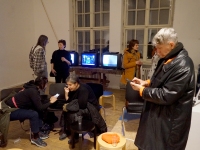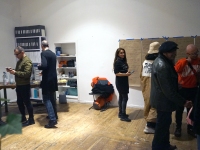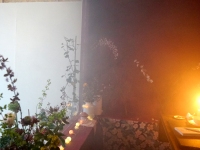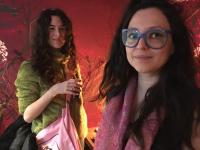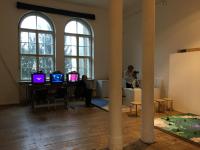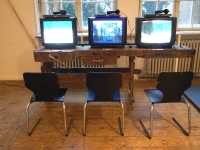LAGOS Berlin @ MOMENTUM AiR
ARTIST RESIDENCY
#1
Magaly Vega Lopez
1 – 31 March 2023
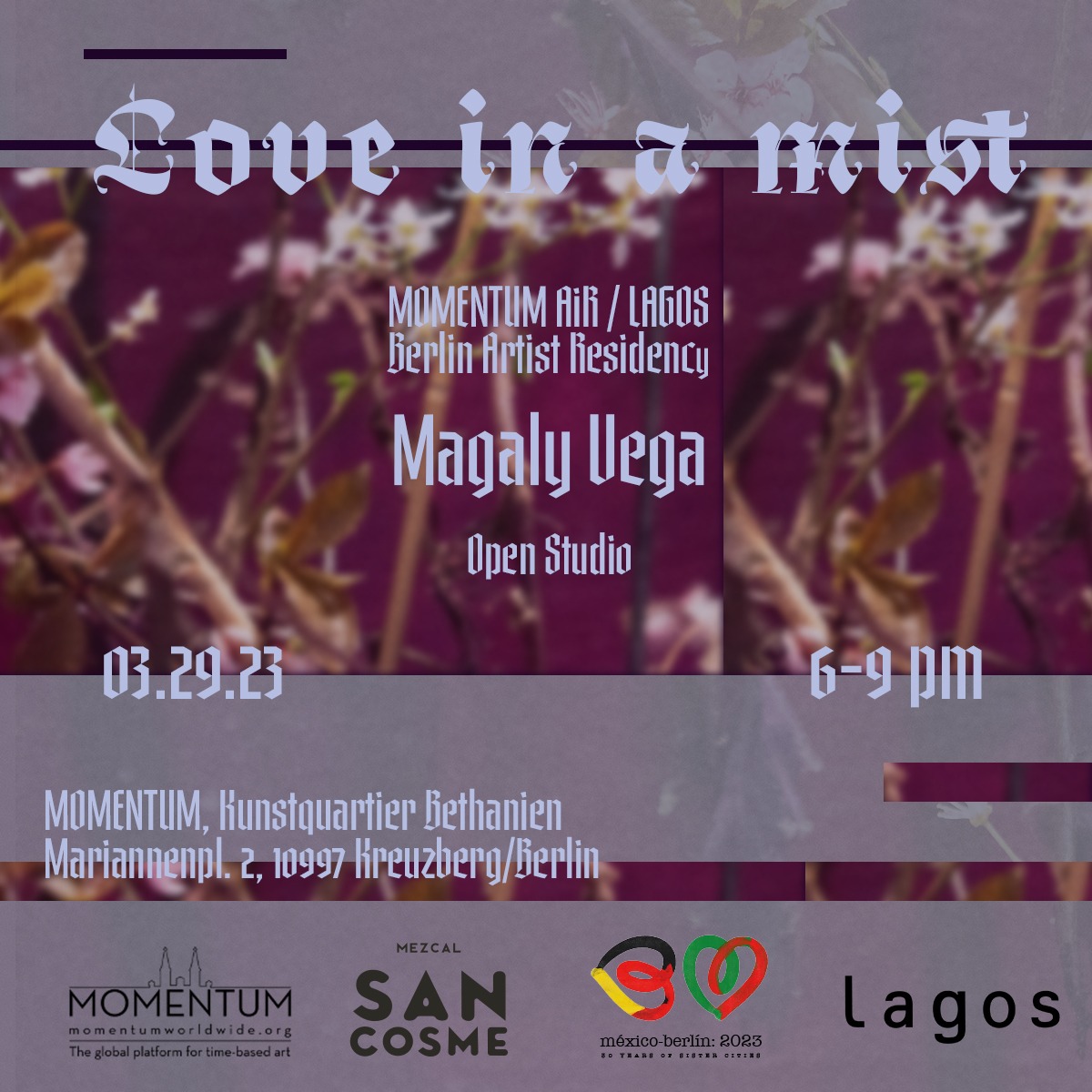
OPEN STUDIO
29 March 2023 @ 6-9pm
LOVE IN A MIST
Performance by Magaly Vega Lopez @ 7pm
ARTIST TALK @ 7:30pm
Magaly Vega Lopez in dialogue with Luis Carrera-Maul, Director of LAGOS Mexico City & Berlin
& Caroline Shepard, Artist and Prof. of Photography
@ MOMENTUM
Kunstquartier Bethanien
Mariannenplatz 2, Berlin

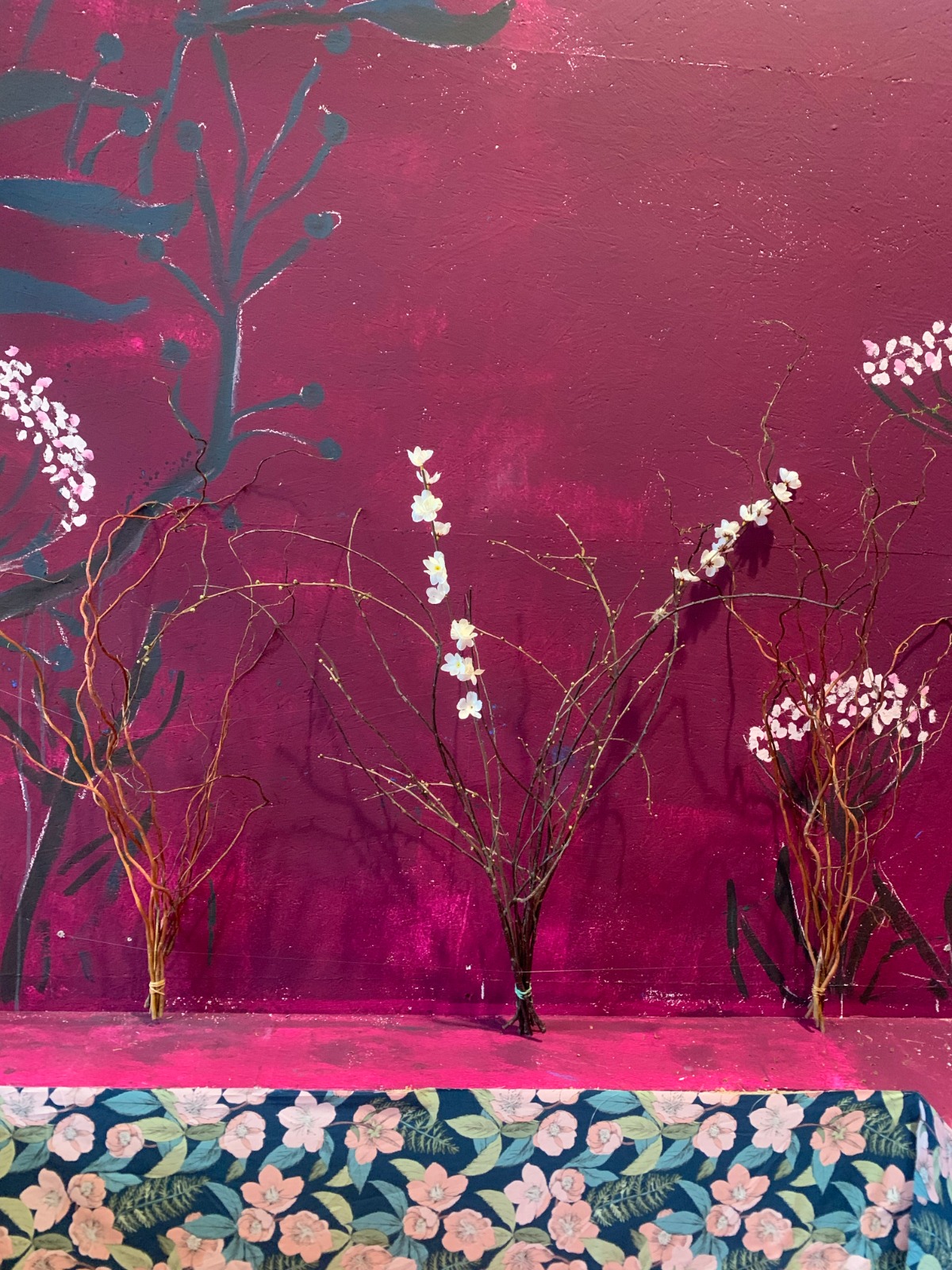
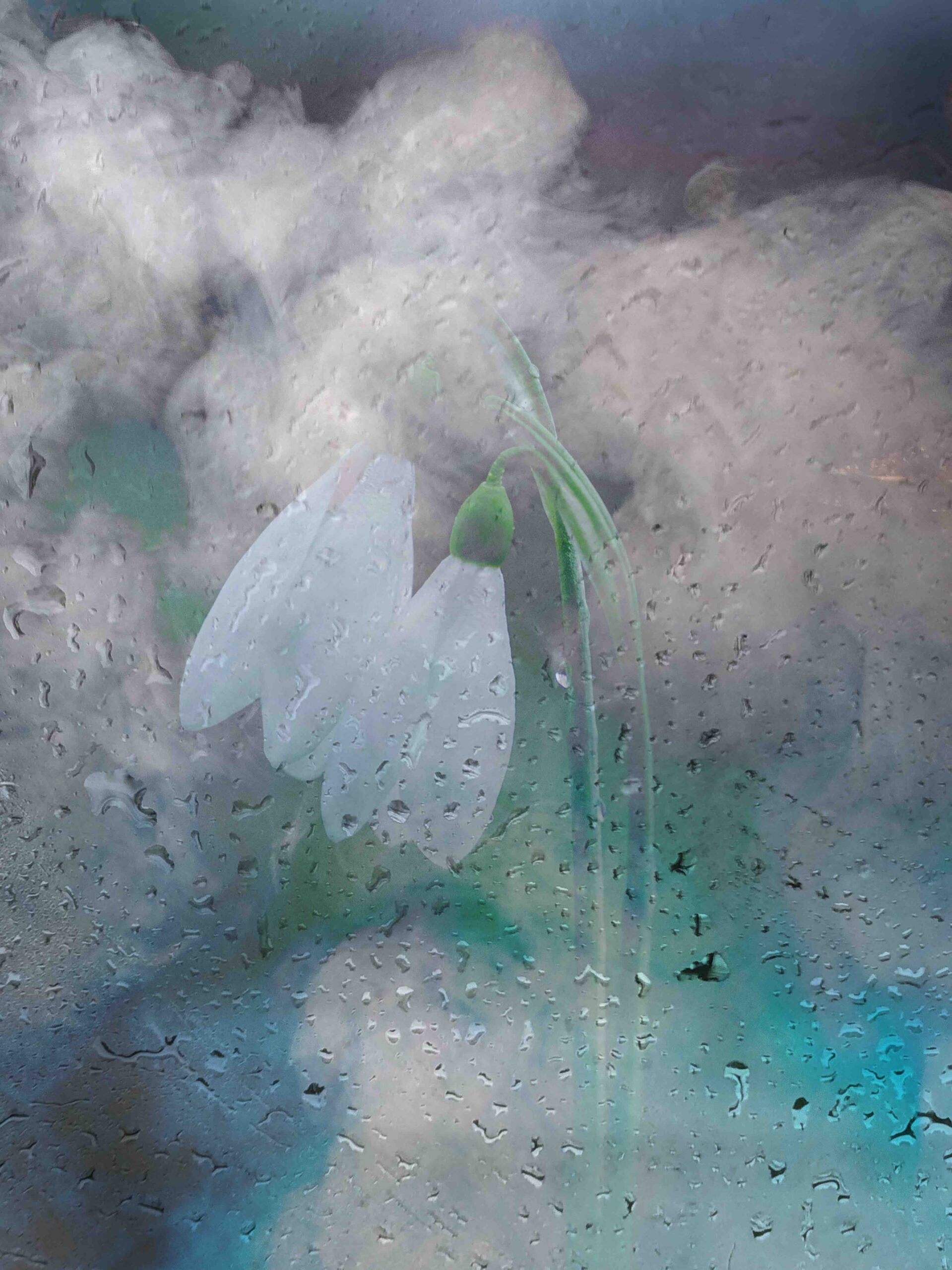
ARTIST BIO:
Magaly Vega Lopez (born in 1986 in Mexico City) is a Storyteller, Visual Artist, Educator, and Writer who lives and works between New York and Mexico City. She holds a Master of Art + Education from NYU Steinhardt, class of 2019, and a Master of Fine Arts from the New York Academy of Art, class of 2016.
Magaly Vega Lopez uses counter-narratives to start a dialogue on the violent acts of reality and pursues possible social healing through art. She believes in art that interacts with the eye of the beholder, starts a conversation or action, and lets us have our own voice. She believes that only through listening to your community you can achieve a profound knowledge of humanity. She reflects on her teaching experience, conversations, and personal memory in her own artwork. She uses art to explore the world, share, and honor stories. Art as a social-act rather than an individual practice.
Her work has been exhibited in the United States, Mexico, Uruguay, Argentina, Spain, and Germany. She has been awarded artist residencies in Russia (2015: New York Art Academy Art Residency, Moscow & St. Petersburg, Russia); Argentina (2018: AIR Program, Tribu de Trueno, Bariloche, Argentina); Switzerland (2019: Flair Talents, Bulle, Switzerland); Mexico (2021: J.A. Monroy Bienal x LAGOS Art Residencies, Mexico City); Uruguay (2022: Mango Air Program x Puertas Abiertas, Punta del Este, Uruguay); Germany (2023: LAGOS Berlin x MOMENTUM AiR, Berlin, Germany); Iceland (2023: Gamli Skóli Old School Arthouse, Iceland).
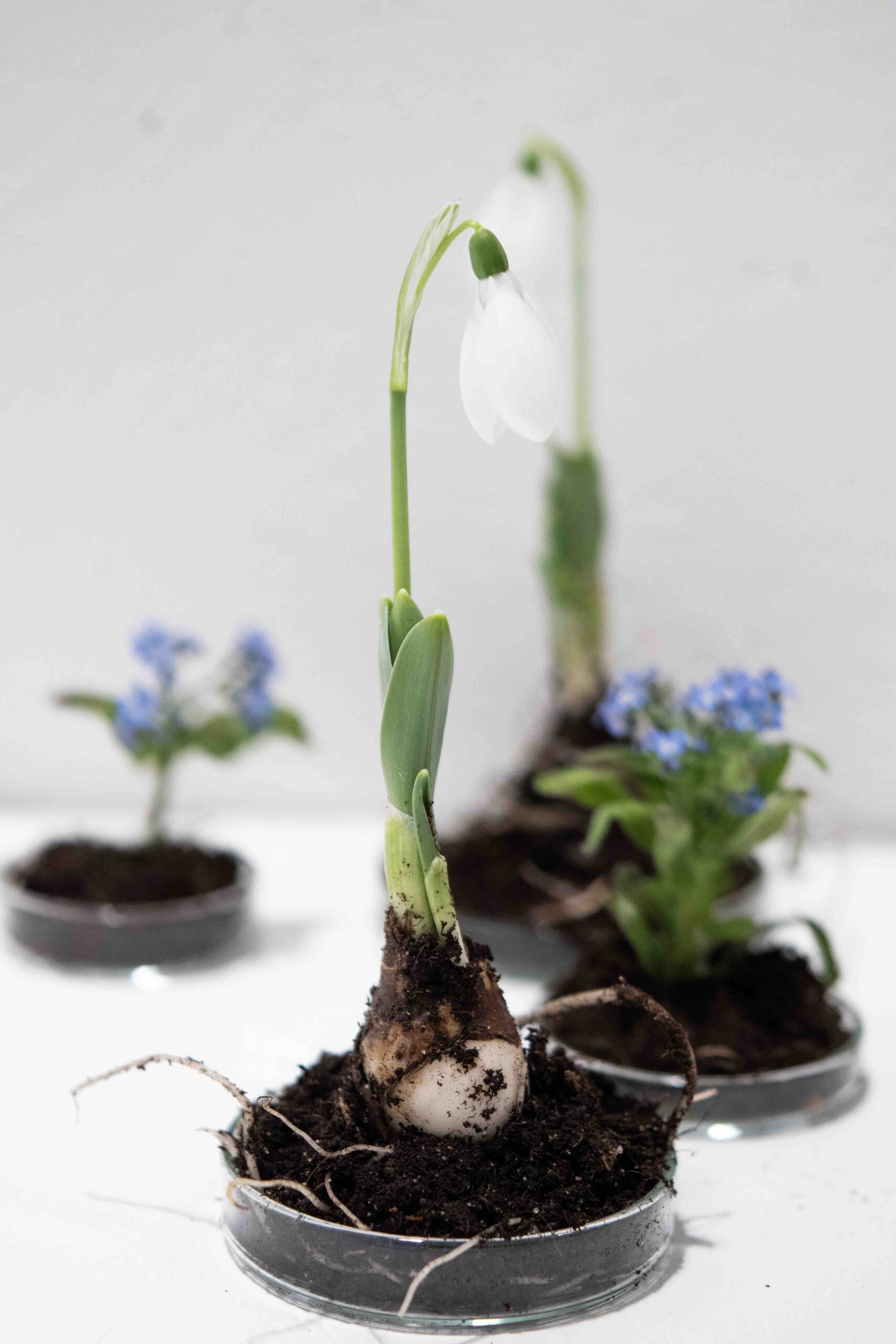
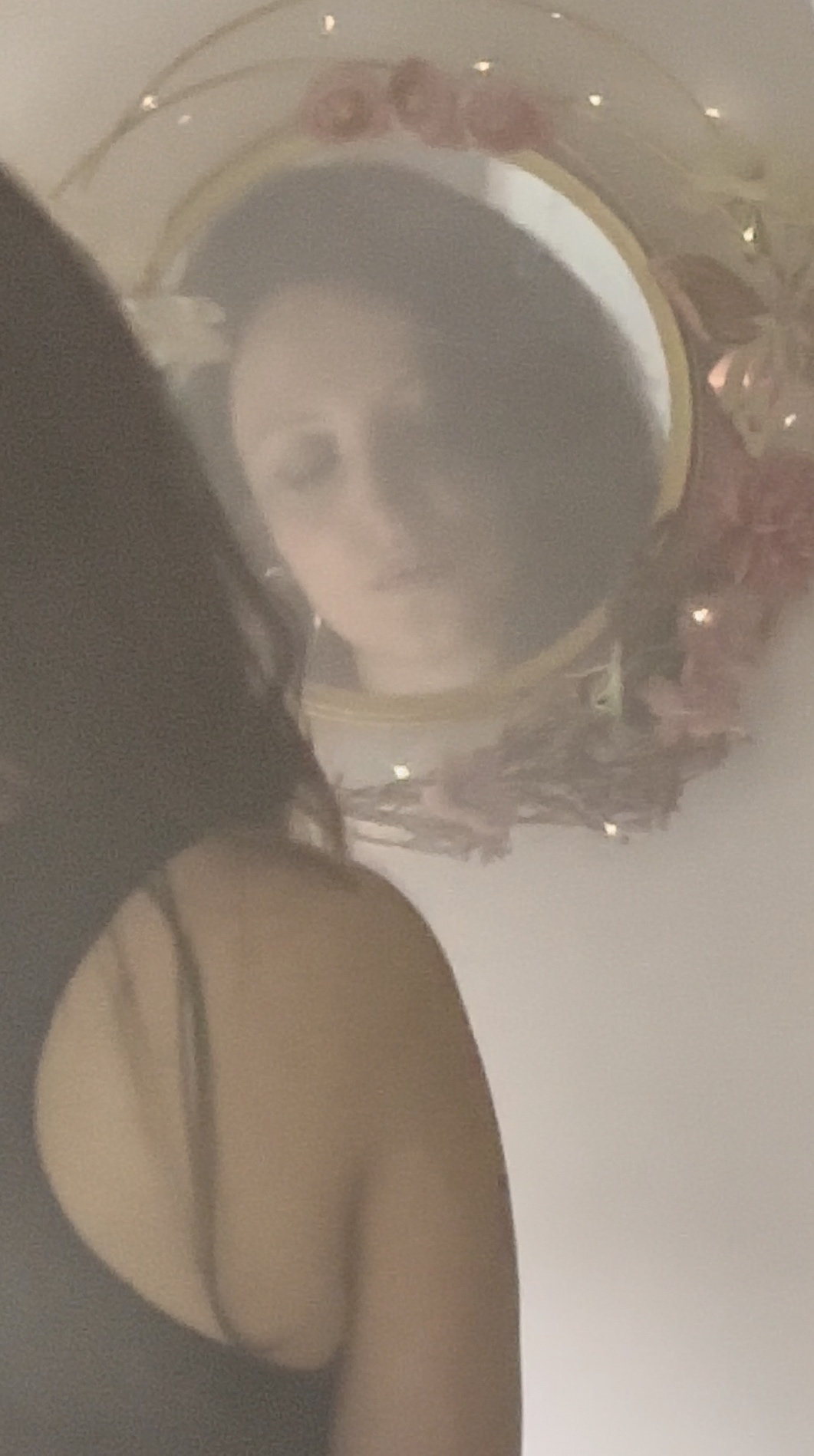
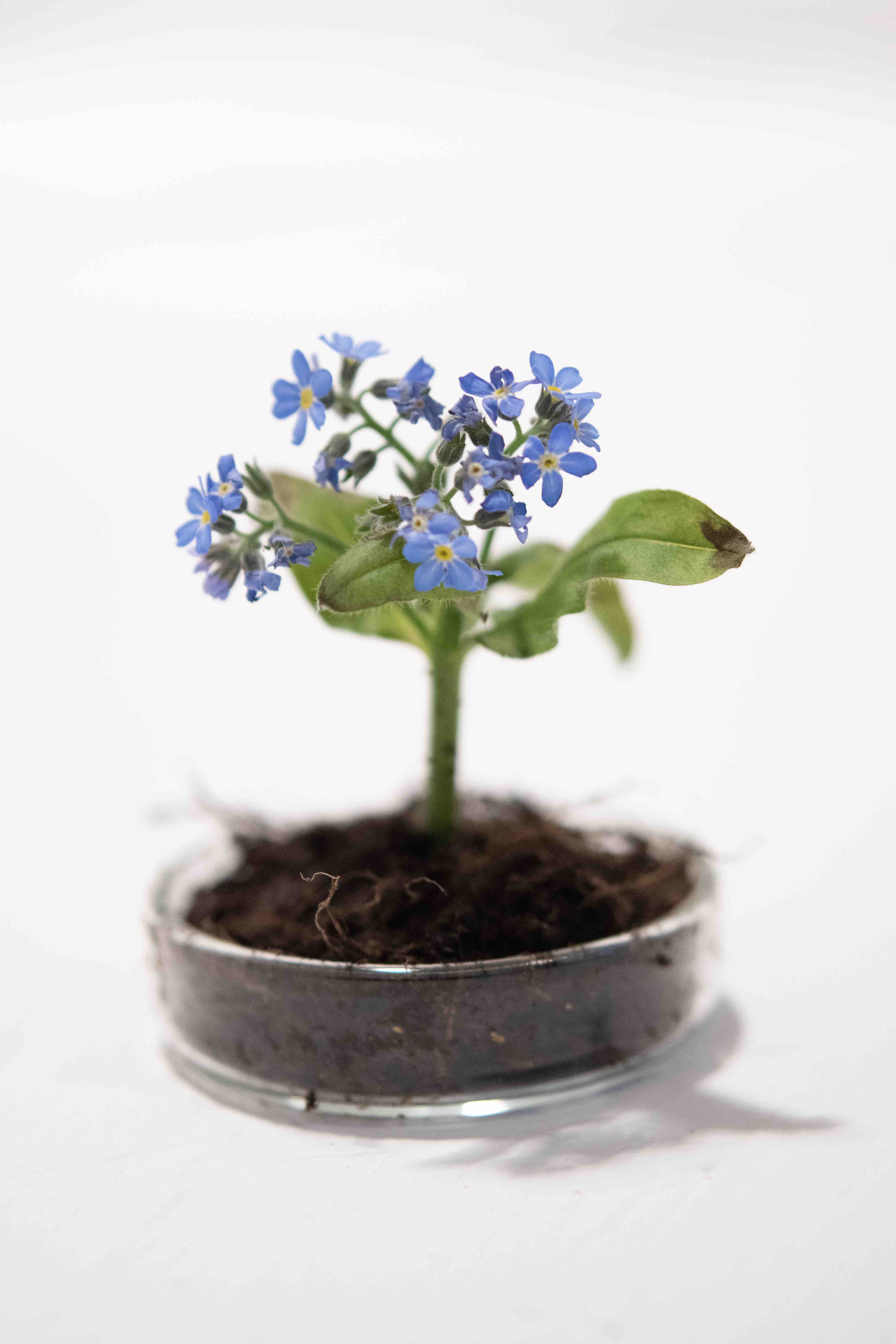
ARTIST RESIDENCY PROJECT:
LOVE IN A MIST
For her Artist Residency project at LAGOS Berlin @ MOMENTUM, Magaly Vega Lopez transposes her ongoing research on domestic violence in her native Mexico into the German context. Taking the form of research, installation, and performance, “Love In A Mist” addresses the increase in domestic violence in Germany, and the inherent biases entrenched within the legal system. This project is accompanied by the presentation of three previous works by Magaly Vega Lopez related to the shockingly prevalent problem of violence against women in Mexico, where the murder of women is such recognised by the legal system as feminicide.
ARTIST STATEMENT:
How are certain spaces transformed both physically and symbolically with the use we give to the air? How do our bodies resist certain instruments of violence? How do we redefine our relationship with air?
“Love in a Mist” is a project that investigates the relationship between air and the violence of the invisible. The kind of violence that is linked to what we normally do not associate with instruments of cruelty. The management of air supply as a weapon for femi(ni)cide worldwide, especially in domestic spaces. As Monika Schröttle explains regarding domestic violence, “The violence is less visible to outsiders. The shame is even greater.” The shame that Schröttle is talking about is regarding how many of these women killed were well educated and successful professionals and how their status made them feel that they were not allowed to speak. The image of the strong successful women makes society diminish any sign of violence or even asking if there is any issue. Many of them don’t even speak out with their therapist regarding their daily violence.
In Germany domestic violence is becoming a hidden plague. In the last couple of years, the government report reveals that domestic violence increased 3.4% in 5 years, the overwhelming majority of victims are women. The official figures show that in 2021, assault resulting in death due to intimate partner violence for females was 113 females. That is 89% of the victims were women that year. Most of the perpetrators are partners or ex partners and almost half of victims lived with the perpetrator in a shared household. That means a German woman is killed by her partner once every three days.
Even when Germany has one of the highest rates of femi(ni)cide in Europe. Officially the government does not catalog any of these deaths as femi(ni)cide. For researchers it is a difficult task to provide numbers and stats since there is no official data. One of the main institutions working on German violence against women is The Femicide Observation Center Germany. In 2020 they published “EvidenceBased Data on German Femicides” by UN Special Rapporteur Dr. Kristina Felicitas Wolff. They have continually published more data since then.
One of the main concerns of the legal term “ intimate partner violence” is that it disregards homicides committed by brothers, sons, fathers, stalkers etc., thus minimizing the scope.
“The fact that German society is exposed to an unspecific vocabulary that exclusively benefits perpetrators by, for example, dehumanizing those killed via the objectifying expression »extended suicide« posthumously to the extension of the killer, is another glaring, structural grievance that must be eliminated.” [-Kristina Felicitas Wolff]
Death by suffocation is legally called in Germany, attacks on air supply (choke, suffocate, strangulate) and it is the second modus operandi for killing women due to intimate partner violence. “Although attacks on the air supply are the second leading cause of death, the criminal law assessment »bodily injury« does not map the attack directly on life (Wolff).” Meaning that this term led to sentence reductions or being guilty of manslaughter instead of murder. Air as an indirect weapon becomes the perfect instrument of cruelty.
A sensory art installation that uses the senses of smell, sight, touch and hearing to immerse us in a space where the invisible becomes visible. A space that on the one hand looks beautiful at first glance, linked to the feminine west social construction and gradually transforms into a suffocating place where it invites us to question the murders of women caused by attacks on air supply.
Beauty creates a barrier, it dazzles us from the outside and doesn’t let us in. If we add to the formula strength, education, and success, then we got this perfect place for violence to live and go unnoticed. The aftermath, are you able to smell the violence?
How can society demand that the government investigate, name and prevent femi(ni)cides?
How can we keep the beauty and get rid of violence?
How to talk about violence to generate thoughts that nourish us and destroy us?
How to search, find the tools and transform the objects that we have in our households in order to build a shelter and eventually recover the spirit?
– Magaly Vega Lopez
Bibliography:
Femicide Observation Center Germany – Evidence-Based Data on German Femicides > >
https://femicide-watch.org/node/920874
Wolff, K (2022). Germany: Deadly Consequences Based on Ignorance of Rule of Law. Außeruniversitäre Aktion -AuA.
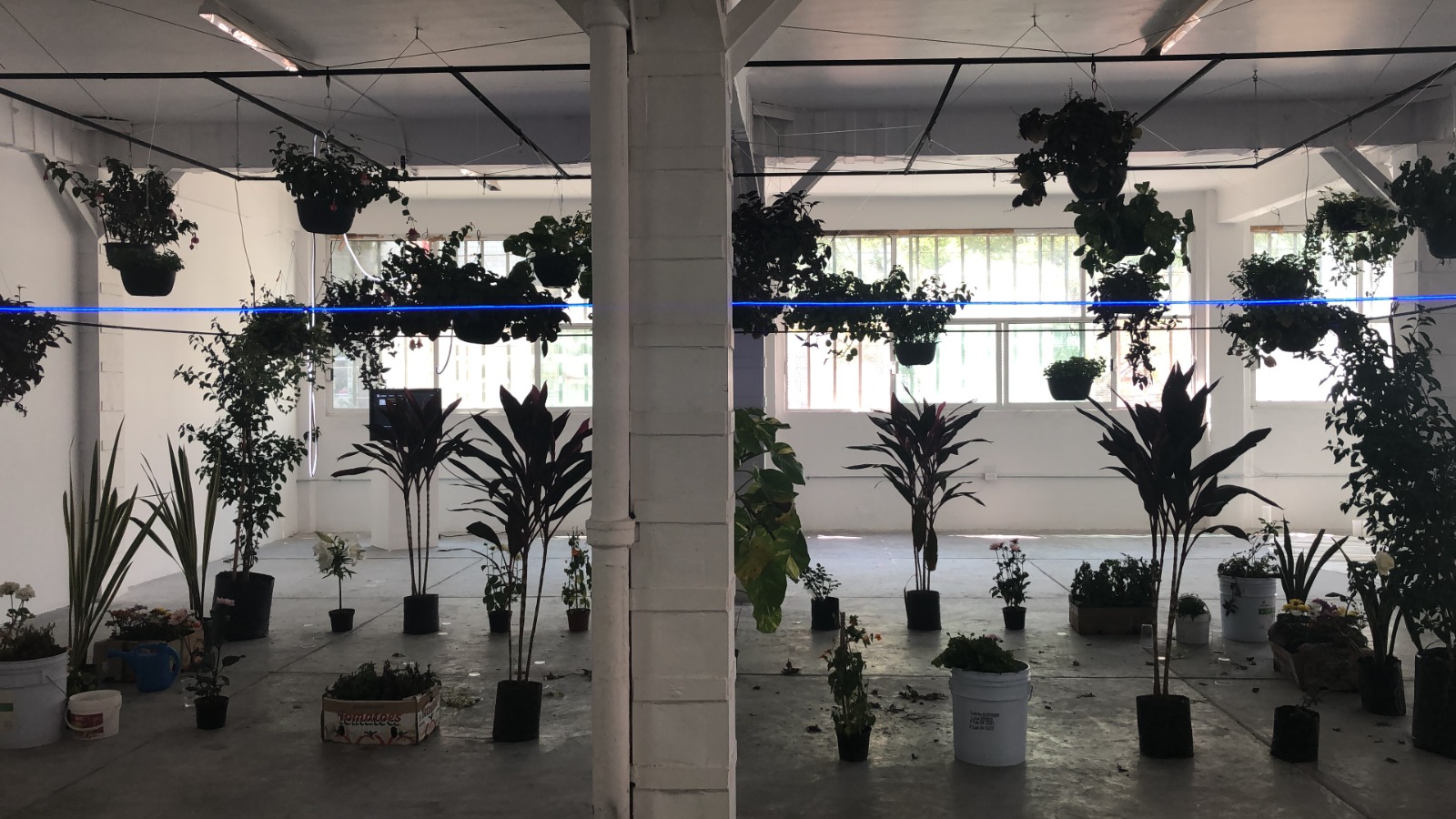
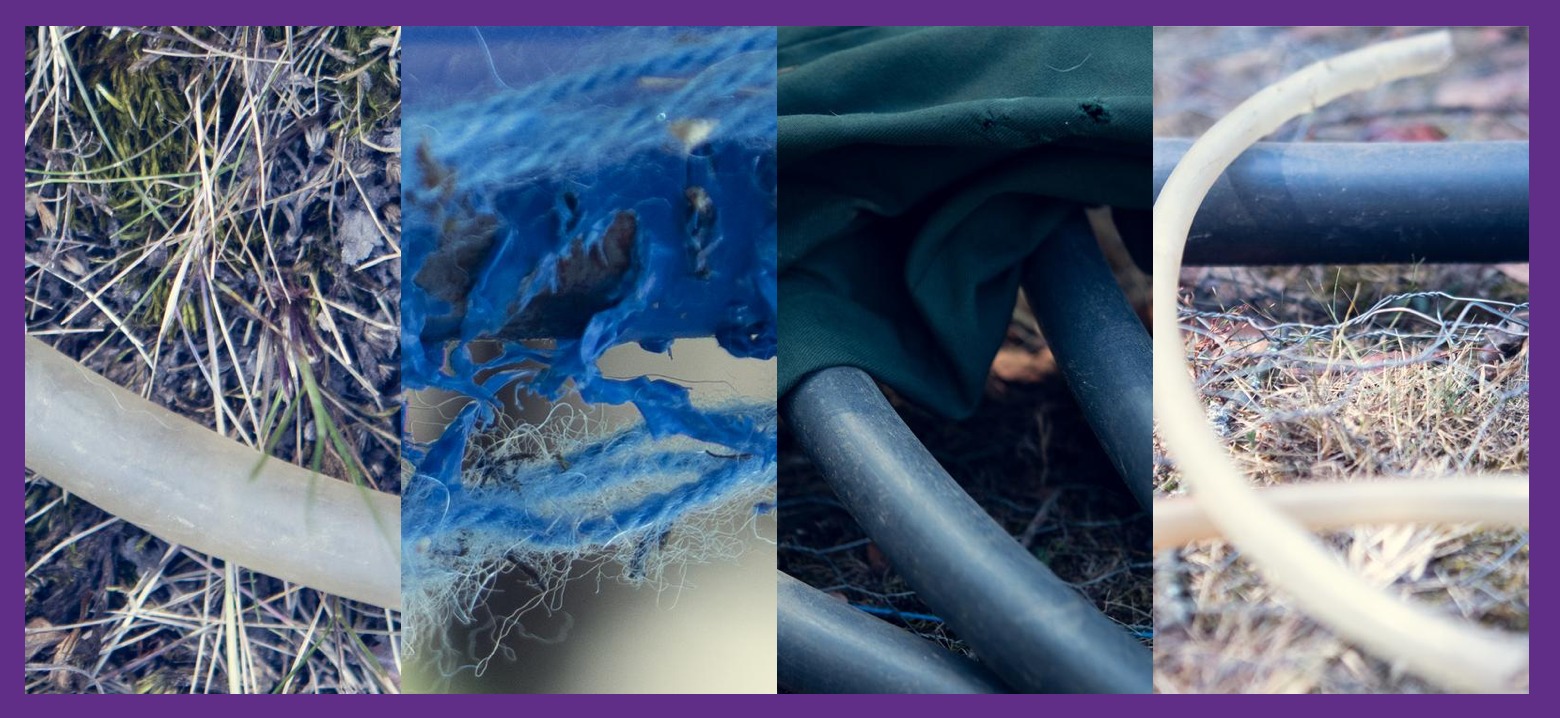
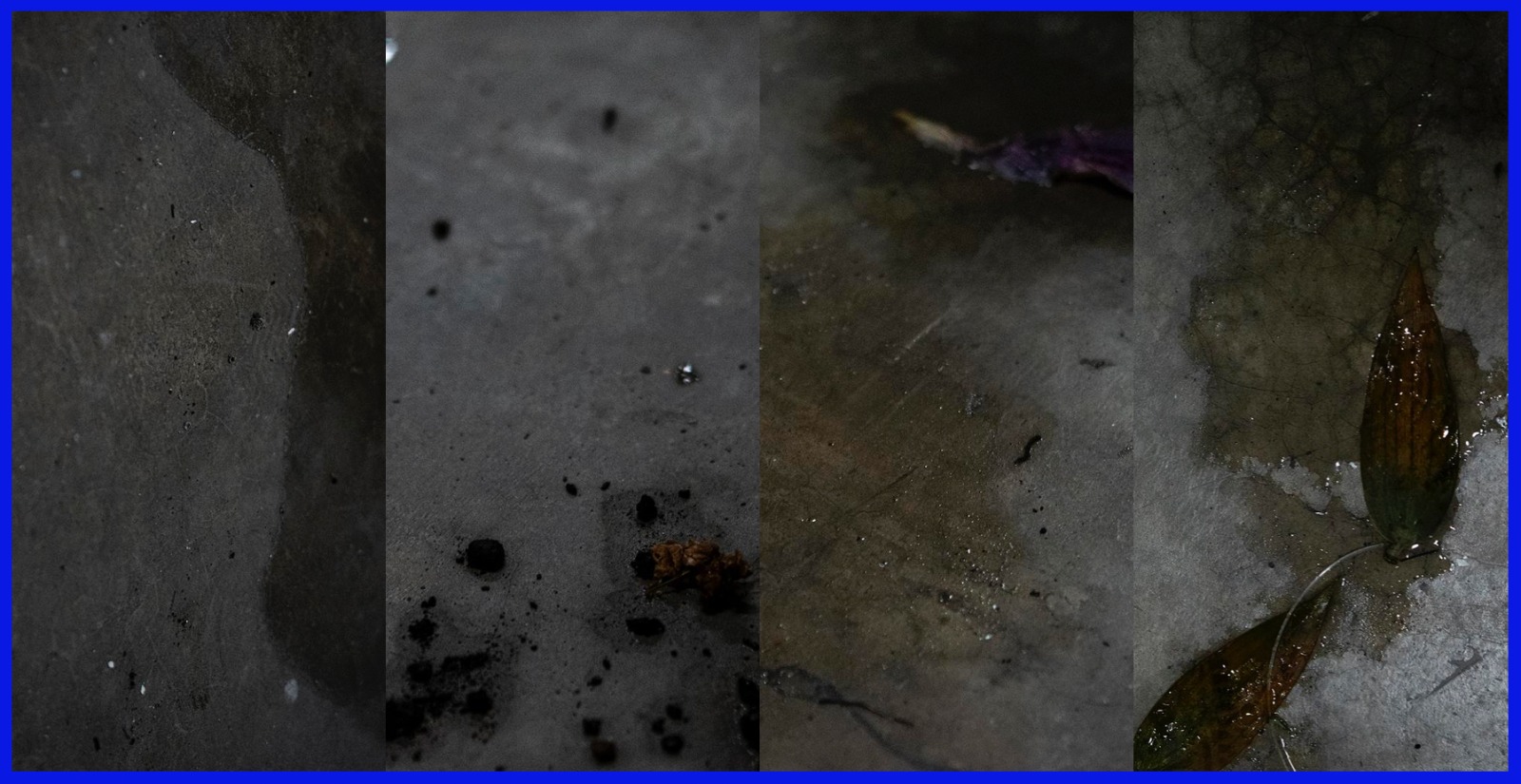
RELATED PROJECTS ALSO ON SHOW:
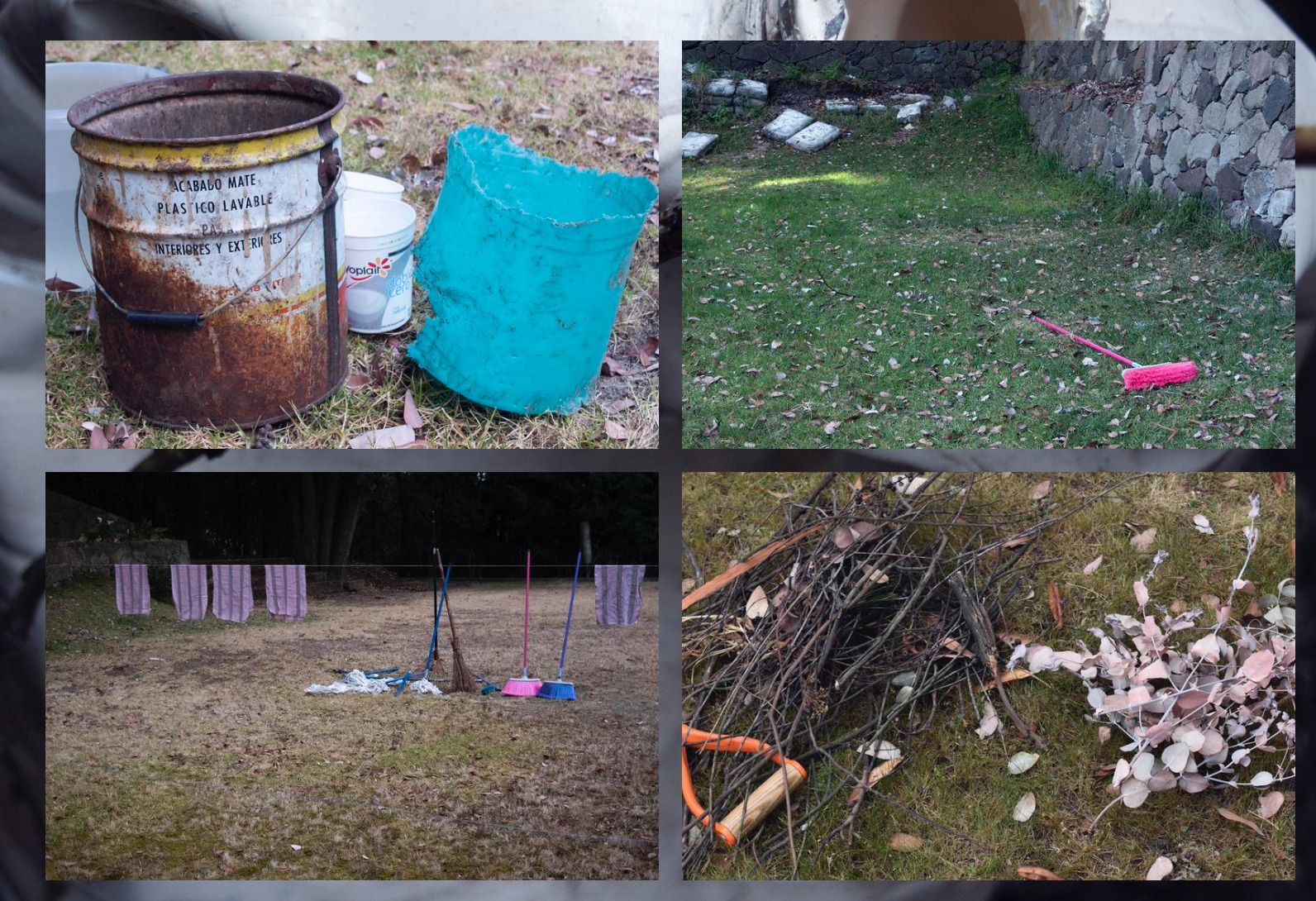
The emancipation of the surrender of being (2021)
Using the invisible and neglected domestic activities as materials. I used found objects as a way to ask myself how can we heal our relationship with domestic oppressive spaces, how can we honor all of those that suffer from domestic violence, and how can we resignify the domestic labors and their objects/tools.
In a country like Mexico where domestic violence increases every year and even more with the pandemic of COVID-19, I decided to explore and inquire where this violence begins in a familiar yet neglected space. Investigating my memory, my family history and national events, a series of actions led me to ask myself even more questions and take another look at everything that is required to have functional living but is omitted.
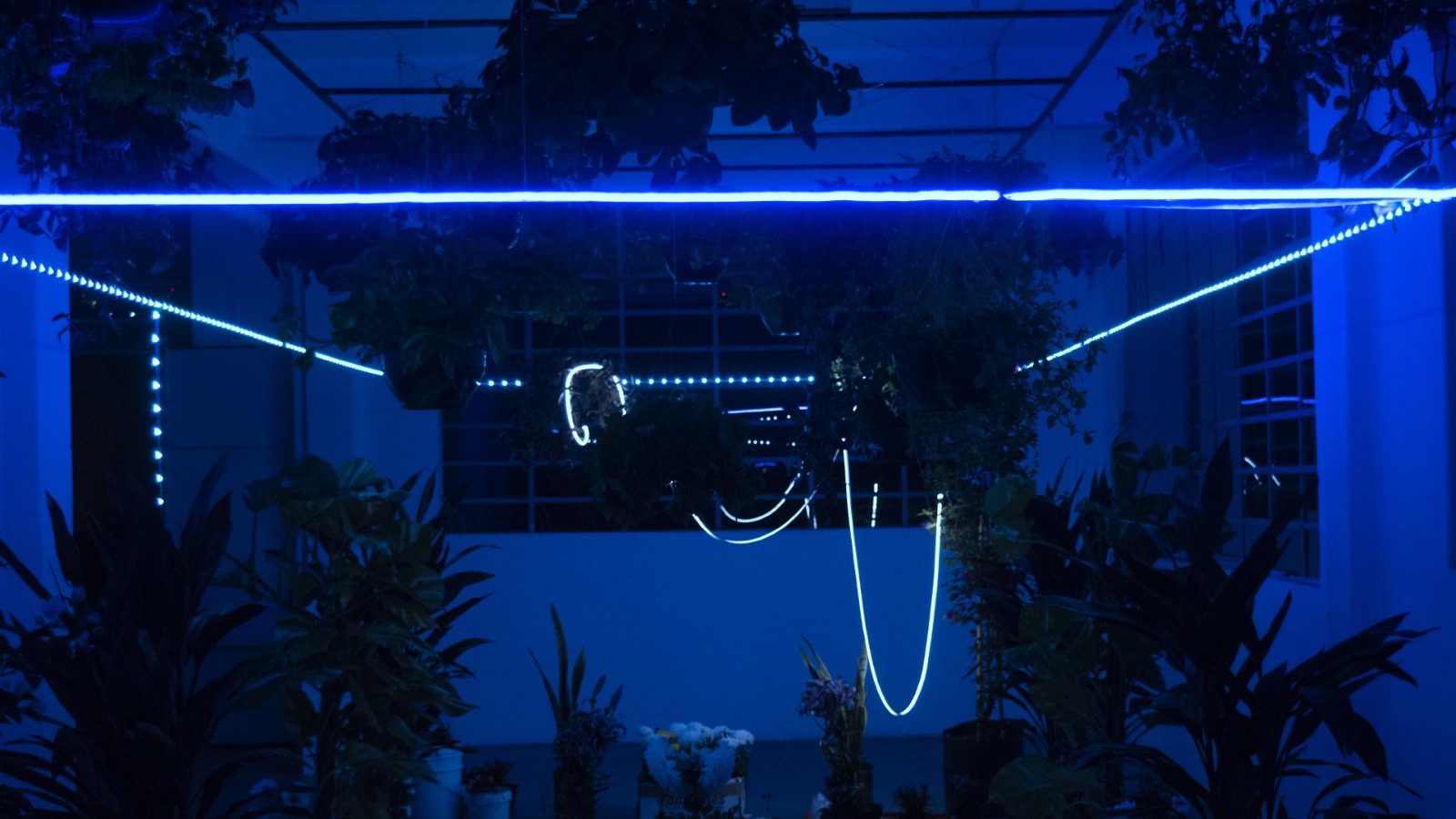
The eviction of Santa Julia: Resisting against the calamity (2021)
Where to find domestic activities invisible and unattended when you can’t enter domestic spaces? Can domestic violence spread into public spaces? Walking for a month in Anahuac neighborhood in Mexico City, wanting to find where the violence of the invisible dwells, using my memory, my experiences, and photographic records and the events of violence in Anahuac neighborhood from 2020 to 2021, I found that in all that we do not see, that in all that we do not associate with violence one learns to walk on our dead spirits, resisting the inevitable. Living altars to shake off violence and plants to protect us from inevitable falls.
The Anahuac neighborhood once belonged to the Santa de Julia neighborhood and for many of its inhabitants is still part of Santa Julia. Anahuac is the Miguel Hidalgo neighborhood with the highest rate of violence. As women’s bodies are thrown off balconies and assaults on passersby end in death, one wonders if one can really get there and enter without being transgressed.
The symbol of the virgin as protector in Mexico is something one learns on a daily basis as a Mexican. In grandmother’s rosary, in the processions of the towns, in the colorful pendants and medals and in many occasions we entrust ourselves to her in situations of violence. I walked through Anáhuac neighborhood and all those altars are more than altars. They are the question of why drugs, human trafficking and domestic violence do not end and inhabit the daily life of this neighborhood. How many altars are needed to return safety to this community? And who benefits from the absence of such altars?
Through actions and a site specific installation I inquired about how we can move through places by connecting with the past/roots and rethink the future both personal and communal. How to talk about violence to generate thoughts of nurturing and not destruction? How to search, find the tools and transform the objects I count on to build a shelter and eventually regain the spirit?
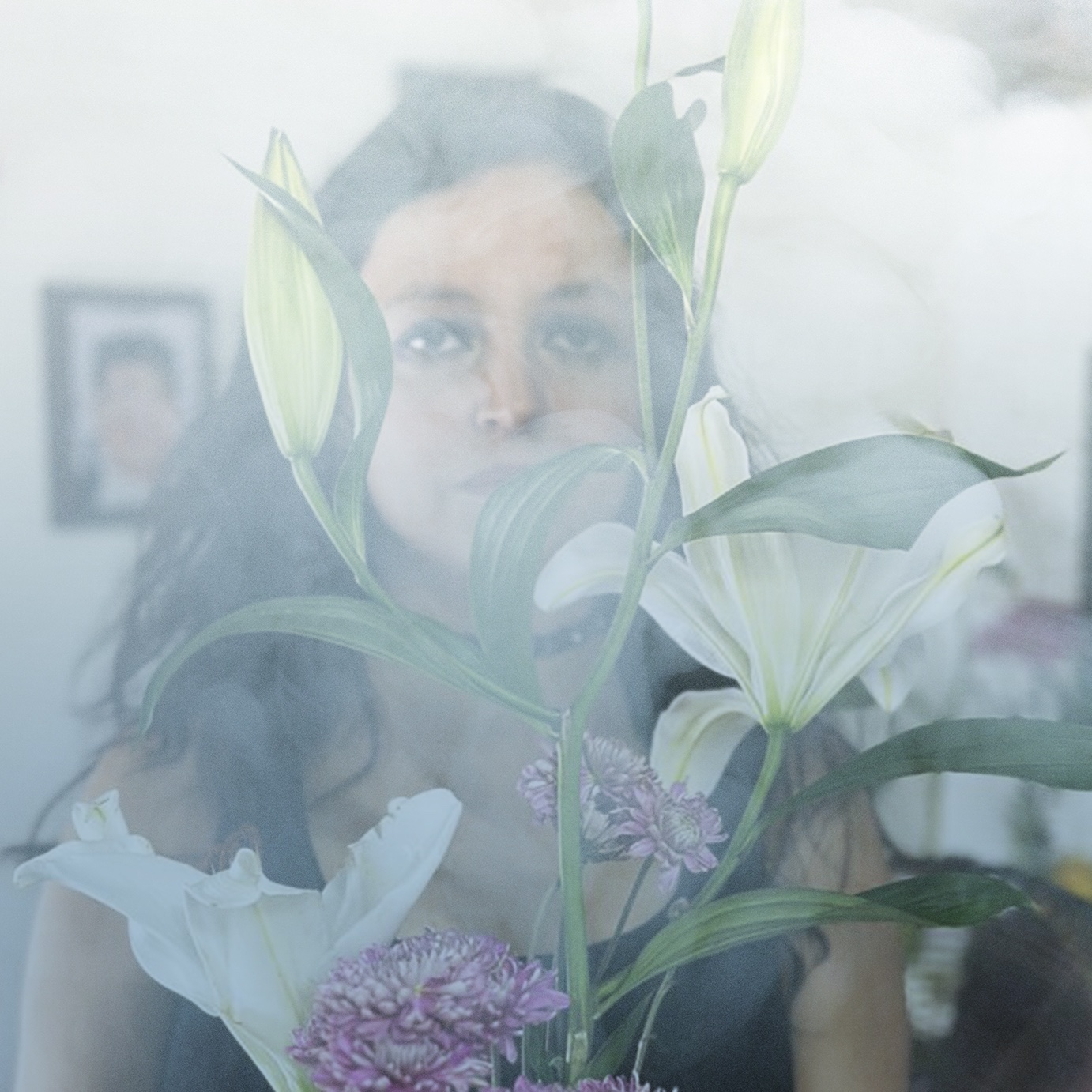
Air Supply (2023)
You breathe… the light enters – The Air as an instrument – The air as a bond – The violence of the invisible – It disrupts all of us.
Air Supply is a project that investigates the relationship between air and the violence of the invisible. That violence that is linked to what we normally do not associate with violence and which goes back to what we do not associate as an instrument of cruelty. In this case, the air works as a weapon for femicide worldwide, especially in domestic spaces.
Plants have served as protection elements for women. In an invisible way, women using certain plants can make their attacker sick or even kill them. In this project:
Smell of space: Holly. Use: purgative and irritant. Obstruction of the digestive system. Eating the fruit can be deadly in large doses.
Amarylis: Contains toxins that can cause vomiting, depression, diarrhea, abdominal pain, hypersalivation, anorexia, and seizures.
Lilis/Azucenas: Vomiting, lethargy, tachycardia and polyuria.
Tulip: Eating the bulb causes indigestion, central nervous system depression, seizures, and cardiac abnormalities.
Chrysanthemum: Contains pyrethrins that can cause gastrointestinal imbalance, depression and loss of coordination.
Mexico adds 3,462 women murdered in 2021, an average of more than 10 per day, according to updated figures from the Executive Secretariat of the National Public Security System (SESNSP).-El Heraldo, 11/19/2022
According to data from the National Information Center of the Secretariat for Citizen Security and Protection (11/30/22), at least 112,300 women have been victims of violence in Mexico.
In Mexico, a homicide caused by suffocation is classified as “with another element”.
In this space are the portraits of:
Debanhi Escobar, whose body was found in April 2022, died of suffocation in its variety of respiratory orifice obstruction.
Cecilia, Araceli and Dora, the sisters appeared dead and with signs of suffocation in a house in the city of Torreón in 2020.

The MOMENTUM AiR / LAGOS Berlin
ARTIST RESIDENCY
is part of the
LAGOS Mexico City / MOMENTUM Berlin
RESIDENCY EXCHANGE


 Back to Index
Back to Index
